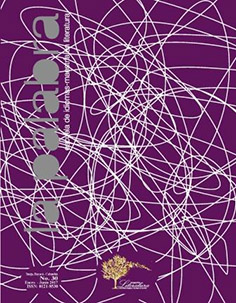Kierkegaard: literatura, filosofía, vida

Abstract
Three stages can be determined for the becoming of subjects in Søren Kierkegaard’s work: aesthetic, ethical and religious. However, an autobiographical reading makes it possible to identify a fundamental problem in these stages: the figuration of subjectivity in the complex relationship between literature, philosophy and life. The present work seeks to analyze this relationship through two biographical facts, the death of the father and the breaking off of his engagement, as experiences that allow Kierkegaard to elaborate a fundamental concept: conception of life, which not only accounts for what in general terms is called a philosophy of existence, but also allows us to read a narrative of the Self where writing becomes a singular enunciation due to the combined presence of thought and experience.Keywords
Form, Experience, Life, Philosophy, Literature, Subjectivity, Autobiography
References
- Hernández Peñaloza, A. (2016). El diario de un escritor en “Encuentro en Saint-Nazaire” de Ricardo Piglia. La Palabra. (28), 75-90. DOI: https://doi.org/10.19053/01218530.4789
- Adorno, Th. (2006). Kierkegaard. Construcción de lo estético. Madrid: Akal.
- Bataille, G. (2000). El erotismo. Barcelona: Tusquets.
- Bense, M. (1969). Hegel y Kierkegaard. Una investigación de principios. México: Instituto de Investigaciones Filosóficas. Universidad Nacional de México.
- Cañas, J.L. (2003). Søren Kierkegaard. Entre la inmediatez y la relación. Madrid: Trotta.
- Correas, C. (2005). Kierkegaard: un mito en la génesis de una filosofía. En: S. Kierkegaard. Cartas del noviazgo (pp 7-37). Buenos Aires: Leviatán.
- Haecker, Th. (1956). La joroba de Kierkegaard. Madrid: Ediciones Rialp, S.A.
- Hannay, A. (2010). Kierkegaard. Una biografía. México: Universidad Iberoamericana. DOI: https://doi.org/10.1515/9783110223026.33
- Hincapié Sanches, J. (2011). De estética y seducción en “Los estadios eróticos inmediatos, o el erotismo musical” de Søren Kierkegaard. Filosofía UIS 10 (2), 95-109.
- Dilthey, W. (1953). IV Vida y poesía. México: Fondo de Cultura Económica.
- Lukács, G. (1985). El alma y las formas. Teoría de la novela. México: Grijalbo.
- Nietzsche, F. (2003). El nacimiento de la tragedia. Madrid: Akal.
- Kierkegaard, S. (1955). Diario. Buenos Aires: Santiago rueda Editor.
- Kierkegaard, S. (1966). Mi punto de vista. Madrid: Aguillar.
- Kierkegaard, S. (2005). Cartas del noviazgo. Buenos Aires: Leviatán.
- Kierkegaard, S. (2006a). Escritos 1. De los papeles de alguien que todavía vive. Sobre el concepto de ironía. Madrid: Trotta.
- Kierkegaard, S. (2006b). Escritos 2/1. O lo uno o lo otro. Un fragmento de vida I. Madrid: Trotta.
- Ritvo, J. (1992). La edad de la lectura. Rosario: Beatriz Viterbo Editora.
- Sade. (2006). Filosofía en el tocador. La Plata: Terramar.
- Wahl, J. (1956) Kierkegaard. Buenos Aires: Ediciones Losange.
Downloads
Download data is not yet available.